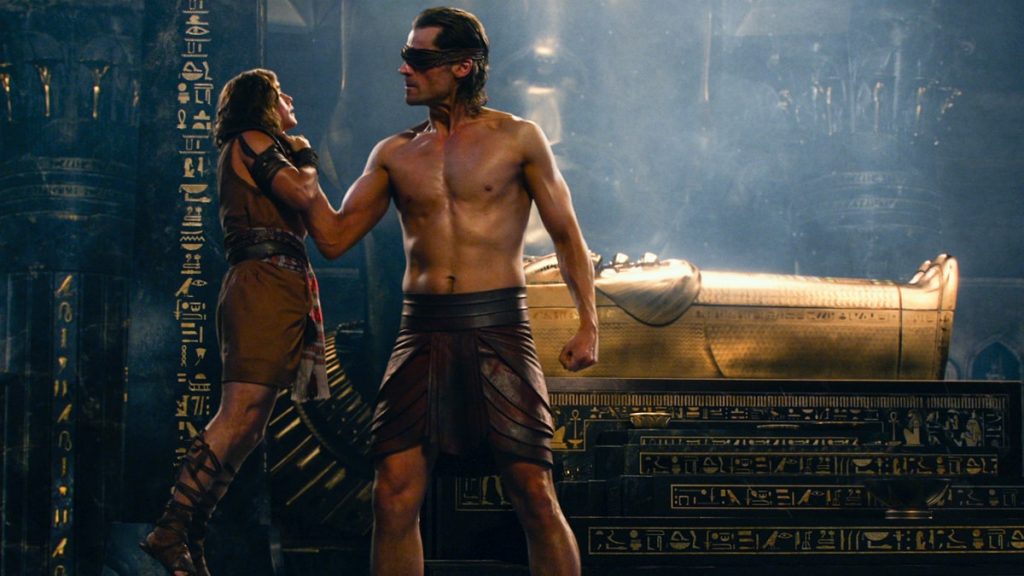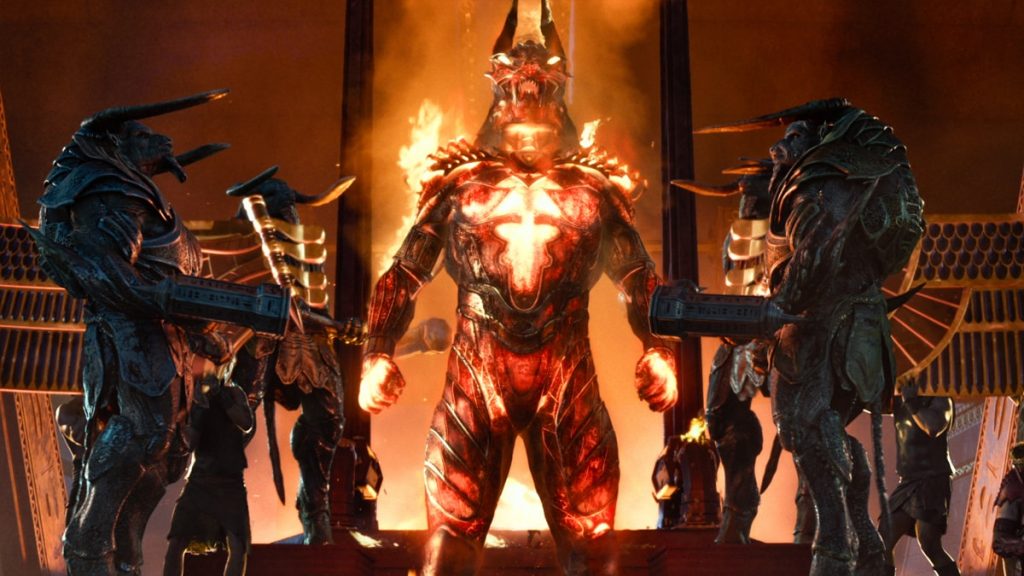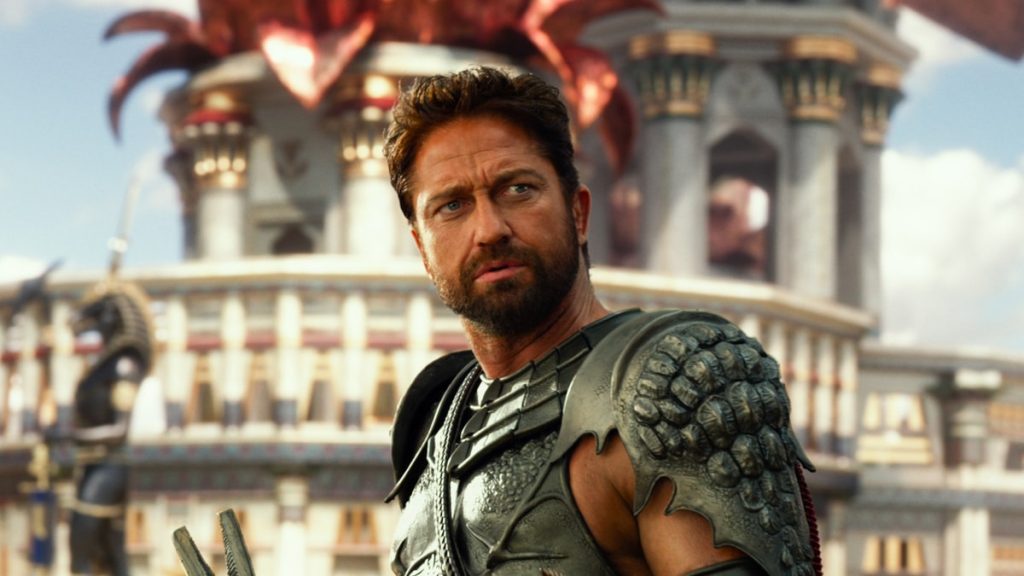Visual effects supervisor Eric Durst has been featured heavily at fxguide and at fxphd – he’s worked on films such as Knowing, Knight and Day and Snowpiercer. Eric’s latest film is director Alex Proyas’ Gods of Egypt, and required the visual effects supervisor to pull out all stops in terms of the vast range of VFX techniques required. To help tell a story that pits mere mortals against gods, the film would rely heavily on virtual sets, CG creatures (including some bad-ass cobras), complicated digital environments that range from the underworld to outer space, meticulous scale work and complex effects.
We recently caught up with Eric for a Background Fundamentals class at fxphd – which you can watch below. And don’t miss the all new fxphd – no terms, new pricing and incredible content.
https://youtu.be/xvMo0okD_WA
Gods of Egypt was filmed at Fox Studios in Sydney (DOP: Peter Menzies), making use of the RED EPIC Dragon shooting a 6K master, although it was finished in 2K. Pre-pro commenced March 2012, filming from March 2014-July 2014 and final post finishing in February 2016. Just over 2,500 visual effects shots were required, many of them multi-facility, via facilities around the globe. The shots breakdown looked like this:
Iloura Sydney – 715 (635 + 80 shared shots)
Iloura Melbourne – 217 (215 + 2 shared shots)
Iloura total – 932 (850 + 82 shared shots)
Cinesite – 405
Rising Sun Pictures – 376
UPP – 318
Makeshift 256
Fin – 213
Tippett – 198
Rodeo – 189
Raynault – 102
Comen VFX – 40
Craft Apes – 27
In this post, we take a look at some of the biggest challenges from the film and how Eric and the VFX vendors approached the work.

Previs
Headed by David Peers, the Gods of Egypt previs team had a significant workload. They actually also approached previs quite differently. Instead of previs’ing the live action and stopping there, they would ‘live-action’ the previs before the live action was filmed. Basically, this entailed crafting a first pass at the action on marked out spaces at Fox Studios. They would record the action, played out on taped out boxed areas marked with numbers, with a bunch of cameras. Alex Proyas would be involved in blocking out this action, the video from which would inform traditional CG previs created by Proof.
Virtual sets
One of the more unusual challenges in the film came from placing live actors inside an array of Egyptian and other environments – most of the scenes were filmed against bluescreen. An added complexity came in form of the size differences between gods and mortals, even though gods at 9 feet tall were also played by human-sized actors. This meant visual effects had to intervene to deal with the scale differences (more on this below).
To deal with placing actors inside these virtual environments, Eric devised some clever on-set interactive effects. The first was to have the actors, if they were walking or running, performed on bluescreen treadmills. This avoided the problem of running out of space in a limited studio environment. For scenes of them walking on sand dunes, the treadmill track was also made ’spongey’ to replicate the kind of compressed movement that would happen while walking on sand.
Dealing with the height differences – which featured in around 1000 shots – was crucial. Eric noted to fxphd that if the mortals were too small against the gods they looked like children, and if the gods were too big they were too imposing. So a number of methods were devised for selling the scales.

One was a dual camera rig that allowed the actors to be filmed simultaneously but with the two separate cameras adjusted to achieve the correct scale differences. Another was an elaborate dual motion control rig that involved shooting the actors who had to be different sizes on separate scaled stages (a similar method was employed on The Hobbit) and then comp’d together.
Ultimately, the dual motion control and separate stages approach was less preferred, since it meant the actors were segregated. Greater performances could be achieved with them acting together and the dual camera rig or visual effects intervention used to sell the scale. For this, in particular, it was determined to always keep in mind a ‘point of contact’ for every shot. For two characters looking at each other, the point of contact, even though they were not touching, was eyeline. But when a god picked up a mortal, the point of contact was of course where the mortal was being held.
The waterfall fight
At one stage, the god Horus (Nikolaj Coster-Waldau) has joined forces with the mortal Bek (Brenton Thwaites) and the two face off against a number of Horus’ brother Set’s (Gerard Butler) 9 foot tall bulldogs at a waterfall. This sequence, again filmed mostly against bluescreen, involved several shooting challenges for Eric and the team at Iloura (let alone the extensive character animation for the bulldogs which were filmed using bluescreen performers on set).
In terms of shooting challenges, first there were camera and editing considerations. The fast paced action of the scene was captured on a rotating 360 camera that spun around the actors on a track. Editor Richard Learoyd had to line up specific pieces of action from this rapidly moving camera. That camera rig itself was part of a major rig and wire removal process too, along with significant roto for parts of the set and other rigging.

In addition to that 360 degree camera, some of the action plays out with ‘bullet time’ like shots – a temps mort filmed with a camera array on a bluescreen set. The subsequent frozen moments were also editorially challenging as Learoyd needed them to play a little longer in the cut than as captured. So Iloura had to re-time the moves using optical flow techniques to acquire interpolated images in between the still frames from the camera array – and of course composite the environment and CG characters in as well.
That environment consisted of a vast background, the rocky outcrop in which the fight takes place and the waterfall itself – a CG sim. The director also wanted to have the water and mist encompass the action to make them feel trapped. While on-set rain and mist machines were used, these can cause havoc with bluescreen compositing and working out what is noise and what isn’t. So Iloura carefully dealt with these comp issues in post while also adding specular highlights onto the actors and creatures to balance the right amount of ‘wet look’.
Check out the new-look fxphd course structure – now with a simpler monthly fee and access to ALL courses.
